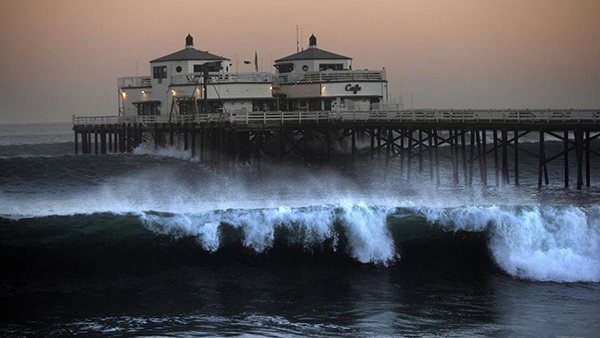How to Stay Safe in Raging Surf
You’ve probably heard about the succession of tropical storms and hurricanes pummeling the West Coast recently. Hurricane Lowell’s heavy surf resulted in Malibu lifeguards making over 250 rescues — on Aug. 24-25 alone. Hot on its heels this week is Hurricane Marie, which might be delivering the biggest waves to hit Southern California since 1997. With 25-foot swells at The Wedge, you can bet the lineup is pretty deep with big wave surfers.
Whether you’re an X Games hopeful, boogieboarder or sunbather, Heal the Bay encourages all oceangoers to exercise extreme caution at the beach this week. While the following tips especially apply this week, the advice is useful year-round.
How to stay safe in the ocean:
- Know your limits. It is totally okay to stay on shore and enjoy the beauty of the waves from the beach. But keep an eye on rogue waves that seem to come out of nowhere — especially during stormy weather.
- Talk to a lifeguard about current conditions. They’re aware of hazards and site-specific conditions.
- Don’t just jump into the water. Always take 15 minutes on shore, watching the pattern and intensity of the breaking waves. How many waves are in a set and at what frequency are they rolling in? The idea is to time your entry into the surf as best as possible to avoid being hammered by an incoming set.
- Never swim alone. Always swim with at least one buddy and at a beach with a lifeguard.
- Look for the best place to enter and leave the water. Plan your exit route in advance. If things get hairy, you don’t want to find yourself trapped in the impact zone or washed against dangerous rocks without a plan. It’s always easier getting in than getting out.
- Mind your surf etiquette. Bigger waves mean bigger forces. A surfboard can become a lethal weapon if surfers cross paths in the water.
- If you see someone in distress, don’t hesitate: Carefully assess the situation. Don’t compromise your own safety to help — a bad situation could easily get worse, fast. Notify a lifeguard immediately, or call 911.
If you’re in the water and in trouble:
- If you’re caught in a rip current, don’t fight it and swim parallel to shore until you are free from the rip. Then you can swim into shore (rip currents are in isolated locations between sand bars).
- If you are caught in the waves, it’s easiest to dive under them than try to swim through them or jump over them. By diving under, you actually use the natural power and rolling pattern of the wave to help you get past the white water.
Click here for more details on surfing and swimming safety.
 Photo: Rick Loomis / Los Angeles Times
Photo: Rick Loomis / Los Angeles Times


